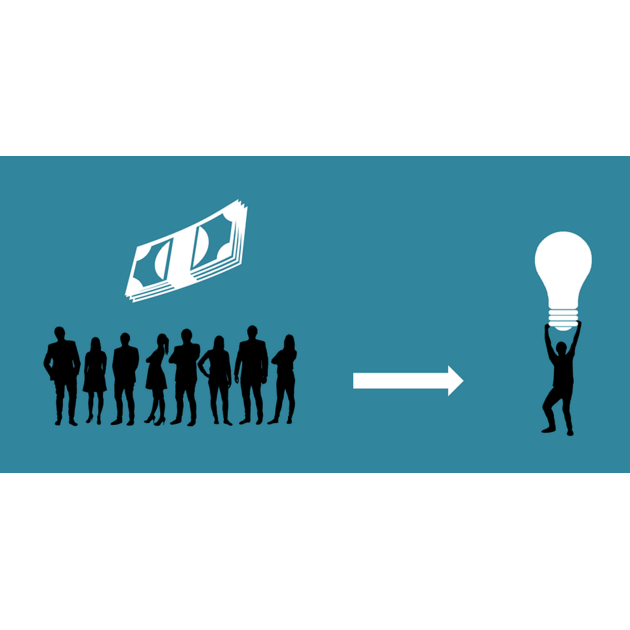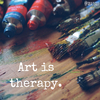Making Art Work: The Craft of Crowdfunding
“Welcome to the Making Art Work Series! Through this accumulating and growing collection of resource articles, we hope to give insight and suggestions to artists in their journey to becoming their most successful creative selves!”
Finding funding as an artist has become incredibly accessible. There are certainly the traditional methods of grant writing and gallery work, but there has been a major boom in platforms for creatives that are revolutionizing funding in the 21st century.
These sites can allow an artist with few resources to be able to make the work they want without falling into debt, or better yet, make a living doing what they love! In this article we will do a quick "at a glance" of the crowdfunding landscape that has been in operation for the past decade or more. Hopefully this is helpful to you!

1.) Kickstarter: (https://www.kickstarter.com/)
In ten years, Kickstarter has managed over $4 Billion funded from 15.5 Million patrons amongst 257,000 successful project campaigns since 2009, making Kickstarter arguably one of the biggest opportunities for artists looking for funding.
Kickstarter projects fall into one of 13 categories and 36 subcategories, including art, comics, dance, design, fashion, film and video, food, games, music, photography, publishing, technology, video games, entertainment and theater.
One of the big draws of Kickstarter are the "backing rewards" feature that allows a creator to gift a patron a certain amount of a product based on how much they donate.
Kickstarter is an “All or nothing” platform, meaning if you don’t hit your intended funding goal you get nothing. An average project funding period runs 30 days, but can be shorter or longer. Kickstarter takes 10% of all successful backing funds. This format is much more receptive to time-sensitive, singular projects and product-based initiatives for artists such as art books, print runs, merchandise and the like.
2.) Patreon: (https://www.patreon.com/)
At five years old, Patreon is a subscription-based platform for artists. This version of artist patronage is focused on ongoing work instead of project funding (although you can curate your account to do one or the other). Artists set up a patreon account and charge custom subscription levels so fans can pay for exclusive access to their work and products.
In less than half a decade, Patreon has generated more than $100,000,000 to creators since its inception, with Patreon charging 5% for each donation and 5% for transaction fees (10% total).
Patreon is popular among Youtube creators/videographers, web comic artists, writers, podcasters, musicians, and other categories of creators who post content continually and regularly online for an existing fan base.
Artists can schedule ongoing monthly charges for content, or can charge patrons per project they complete.
3.) Indiegogo: (https://www.indiegogo.com/)
Eleven years in operation, indiegogo is one of the first sites to offer crowdfunding, and is wider in their options, spanning from projects, ideas or just general charity.They also have a specific "entrepenuership" section of their site for new creators looking for asssitance (https://entrepreneur.indiegogo.com/how-it-works/).
There are no specific deadlines attributed to campaigns and the creator keeps all funds raised, with Indiegogo taking 5% of all campaign contributions.
The top five funded projects on Indiegogo totaled to over $31 Million and include technology, film and education efforts.
4.) Ko-fi: (https://ko-fi.com/)
Ko-fi has raised over $11 million dollars for over 400,000 creators in its seven year history while having no platform fees.
Ko-fi describes itself as a “Tip Jar for creatives”, with features for artists that range from taking donations, taking commissions or setting up a subscription service. The basic service is free, but offers advanced options for a $6 monthly fee and discounted yearly subscription.
Ko-Fi is probably the most casual site running right now that is focused on creators. It is simple, straightforward and low pressure, putting all donations directly into an artist's PayPal account. An artist can get one-time only donations, rolling contributions, monthly installments and more based on their work habits and how they reward and interact with their audience.
You can watch twitch channels (also called "streams") for free, but you can purchase a subscription to channels for additional perks, exclusive features and more depending on the creator you are patronizing. Twitch creators can not only get funding from their subscriber base, but can take donations as well.
Stay tuned for more resources and articles from the Education Team at thalo.com.







